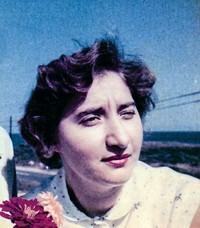Advertisement
Grab your lab coat. Let's get started
Welcome!
Welcome!
Create an account below to get 6 C&EN articles per month, receive newsletters and more - all free.
It seems this is your first time logging in online. Please enter the following information to continue.
As an ACS member you automatically get access to this site. All we need is few more details to create your reading experience.
Not you? Sign in with a different account.
Not you? Sign in with a different account.
ERROR 1
ERROR 1
ERROR 2
ERROR 2
ERROR 2
ERROR 2
ERROR 2
Password and Confirm password must match.
If you have an ACS member number, please enter it here so we can link this account to your membership. (optional)
ERROR 2
ACS values your privacy. By submitting your information, you are gaining access to C&EN and subscribing to our weekly newsletter. We use the information you provide to make your reading experience better, and we will never sell your data to third party members.
People
Women’s Work
by Sarah Everts
September 9, 2013
| A version of this story appeared in
Volume 91, Issue 36
COVER STORY
Women’s Work
Rosalind Franklin’s X-ray diffraction data played a pivotal role in James D. Watson and Francis H. C. Crick’s determination of DNA’s three-dimensional structure. Their failure to properly acknowledge her data may tempt one to assume that the world of structural biology has been unwelcoming to women.
That would be an error. The first person to show that protein crystals could diffract was Dorothy Crowfoot Hodgkin of Oxford University, who went on to solve the structures of insulin and penicillin. In 1964, she won the Nobel Prize in Chemistry for her structure determination of vitamin B-12.
Kathleen Lonsdale, a crystallographer, showed benzene was flat. She was the first to use Fourier transforms to solve the X-ray crystal structure of a compound from diffraction data. She was also one of the first female members of the Royal Society.
Many other women have high-profile positions in structural biology. Add to the list Helen M. Berman, director of the Research Collaborating for Structural Bioinformatics’ Protein Data Bank, and Ada E. Yonath, who shared the 2009 Nobel Prize in Chemistry for her crystallographic studies of the ribosome, a mix of protein and RNA. “There do seem to be more women involved in crystallography than in other physical sciences,” Berman says. The question is, why?
Many researchers point to Hodgkin. As a professor in an undergraduate college at Oxford, she mentored small groups of students. Since the colleges were gender-segregated in her era, she would have mentored only undergraduate women, many of whom were enticed to work in her lab as graduate students, says Cambridge University structural biologist Thomas L. Blundell, who solved the structure of insulin as her graduate student. “She had a big impact. She wasn’t somebody who was openly furthering the aims of women. She just did. Women just came to her lab. But men came as well.” Many of her students, such as Barbara Low, Marjorie Harding, and others, went on to set up crystallography labs around the world.
And what was Hodgkin’s academic heritage? It can be traced back to the father of X-ray crystallography, William Bragg, who mentored both Lonsdale and John D. Bernal, who was Hodgkin’s doctoral adviser (as well as Max F. Perutz’ and John Kendrew’s). Bragg’s openness to having female doctoral students may have impressed Bernal when he himself was a student. Bernal certainly learned that his female graduate student peer—Lonsdale—could do excellent science, which may have inspired him to take on Hodgkin as a student. Later, Franklin moved to Bernal’s lab after her unpleasant experience with DNA, another sign that his lab welcomed women.
MORE ON THIS STORY
Introduction: Nine For Ninety | PDF
Chemical Connections | PDF
Antibacterial Boom And Bust | PDF
Small Science, Big Future | PDF
Understanding The Workings Of Life | PDF
Chemistry By The Numbers | PDF
Plastic Planet | PDF
The Catalysis Chronicles | PDF
Giving Chemists A Helping Hand | PDF
It's Not Easy Being Green | PDF
Readers' Favorite Stories | PDF
Nine Decades Of The Central Science | PDF
How Chemistry Changed the World | C&EN's 90th Anniversary Poster Timeline
Trying To Explain A Bond
A Toast To C&EN At 90




Join the conversation
Contact the reporter
Submit a Letter to the Editor for publication
Engage with us on Twitter